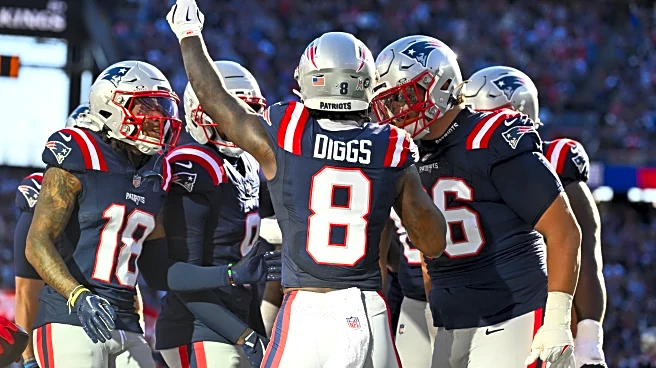What's Happening?
The Cleveland Browns are exploring potential trades for wide receivers as the NFL trade deadline approaches. Currently ranked last in the AFC North with a 2-6 record, the Browns' offense has struggled significantly, particularly in the passing game. The team
ranks 29th in the league for receiver performance, with a low average of 8.5 yards per reception and only seven passing touchdowns this season. The Browns' general manager, Andrew Berry, is reportedly considering acquiring new talent to bolster the team's receiving corps. Potential targets include Jauan Jennings from the San Francisco 49ers, Chris Olave from the New Orleans Saints, and Jaxon Smith-Njigba from the Seattle Seahawks. Each of these players brings different strengths, such as Jennings' physical play and Olave's reliable hands, which could address the Browns' current deficiencies.
Why It's Important?
The Browns' interest in acquiring a new wide receiver highlights the critical need to improve their offensive capabilities. With the team struggling to score and maintain competitive standings in the AFC North, enhancing the receiving unit could provide the necessary boost to their offensive strategy. The potential trades could also impact the broader NFL landscape, as teams like the 49ers, Saints, and Seahawks may adjust their rosters and strategies in response. For the Browns, securing a capable receiver could mean the difference between remaining at the bottom of the division and making a push for a playoff spot.
What's Next?
As the trade deadline looms, the Browns must decide quickly on their course of action. If a trade is executed, it could lead to immediate changes in the team's offensive lineup and strategy. The decision will also likely prompt reactions from fans and analysts, who will scrutinize the impact of any new acquisitions on the team's performance. Additionally, the outcome of these potential trades could influence the future roster decisions of the involved teams, particularly if they are in rebuilding phases or managing salary cap constraints.















